Choughs provide a fun days’ viewing on Welsh coast
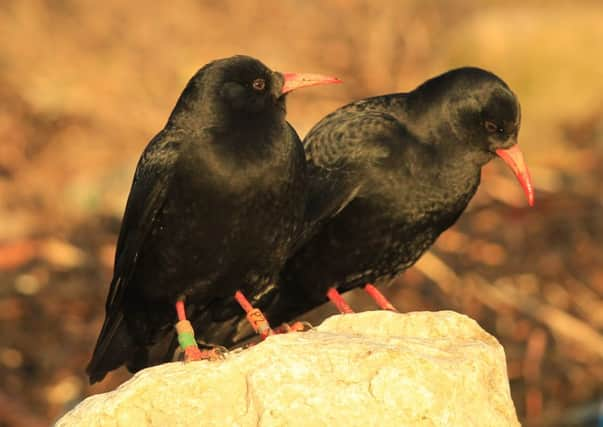

During a recent trip to Wales with my family, I spotted choughs whilst rock-pooling on the beach with my two daughters.
These coal-black birds are the UK’s rarest corvid. They are very sociable and great fun to watch. We were on Church Bay on Anglesey, and since my daughters wanted to collect shells, I hadn’t much time to watch the choughs that day.
Advertisement
Hide AdAdvertisement
Hide AdHowever, once my family had gone back home, I stayed on in Wales with my parents for a few more days, principally to watch red squirrels for a painting I am planning. But I also made some time to see if I could find the choughs again. The sky was cloudy and drizzly as my father and I set off to see them, but I could see a bright slit opening in the grey above Anglesey as we approached.
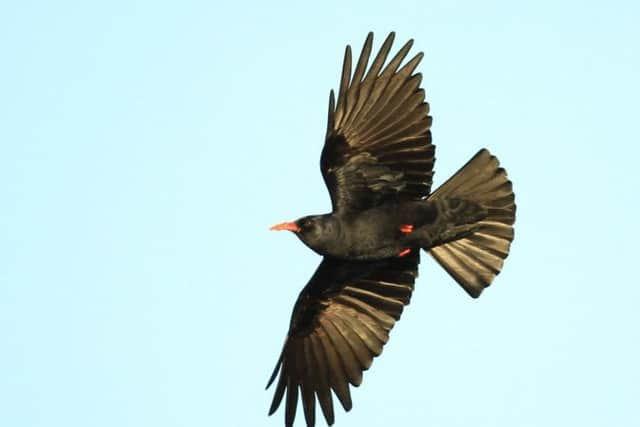

On our way we stopped at Newborough forest, to see a red squirrel colony that my father knew of. We became thoroughly distracted by these entertaining creatures and then by some pintails I spotted in pools as we left the forest.
As we stopped to look at them, I noticed hundreds of wigeon ducks in the sea behind them, little grebes in the foreground, and, to the right thousands of lapwings and golden plovers.
It was nearly lunchtime by the time we got to Church Bay. We ate our sandwiches overlooking the bay and noticed a pair of choughs foraging along the shoreline. We set off towards them, but when we arrived at the spot they had been there was only a flock of starlings foraging in the seaweed. Then we heard a chough call from close by.
Advertisement
Hide AdAdvertisement
Hide AdChoughs make an unmistakably high-pitched sound and keep in touch with one another constantly with these contact calls.
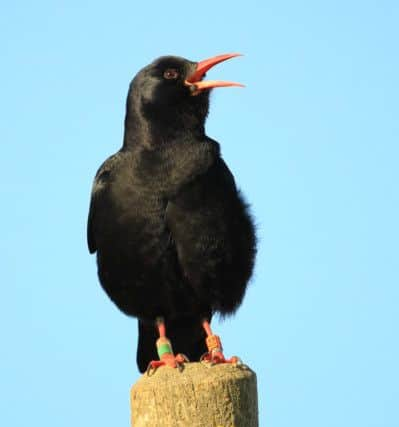

This bird was so well camouflaged against the dark seaweed along the tide line that it took us a minute to locate it. I focussed my camera in on its bright red legs and long red curved beak, which shone out against the seaweed.
Choughs feature on the Cornish coat of arms, where it is believed to be unlucky to kill one as they are said to represent the ghost of King Arthur. The stories have it that the soul of King Arthur departed this world in the form of a chough, its red feet and bill signifying Arthur’s violent and bloody end.
Not much bigger than a jackdaw, with iridescent plumage, they are unusual and striking birds. As the chough walked along the shore, raking through the seaweed with its curved beak, I crept closer. It was picking up great clumps of rotting seaweed and tossing it aside as it searched for insects underneath and seemed to barely notice me.
Advertisement
Hide AdAdvertisement
Hide AdI have seen these rare corvids many times before but I had never been this close. After a while it flew along the shore toward a sheltered bay, using the uplift of wind that drifted off the sea and up the bank.
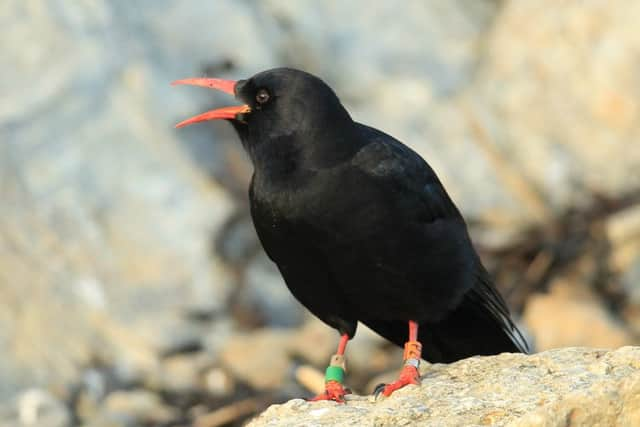

From around the corner came the sound of other choughs calling. We saw another pair on the cliff above, probing the grass for grubs, and another pair on the mud banks working away at the soil.
As they approached one another they were very noisy and would flash their wings in the air and posture by ruffling their feathers and preening.
I found myself wishing I could understand ‘chough-talk’ as I noticed some of the movements were clearly submissive and others represented courting, but what really came across was that they really enjoyed each other’s company. The also seemed to enjoy flying.
Advertisement
Hide AdAdvertisement
Hide AdThe birds were so busy they quickly got used to me, my father, and even my dog as we followed them along the shoreline. It was a glorious sunny afternoon. The bay was awash with birdlife. Oystercatchers and turnstones chased the tide out as they fed, whilst a pair of wrens disappeared and reappeared in between the boulders. I also spotted meadow pipits, a pair of stone chats and a flock of linnets. And of course all these birds didn’t go unnoticed by the local predators. A female sparrowhawk cruised low over the edge of the beach and landed in a gorse bush. As it did so, all these birds momentarily disappeared.
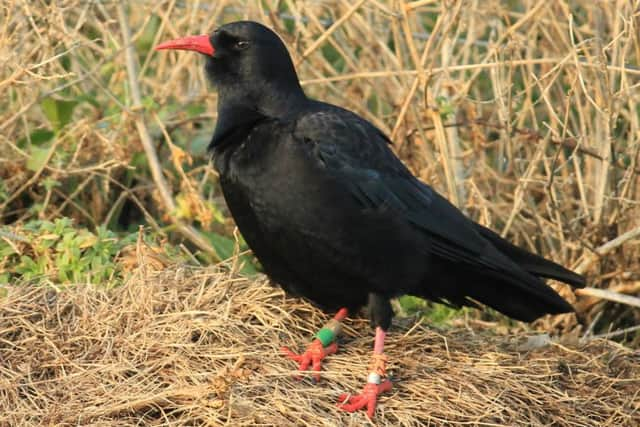

I noticed that three of the choughs had leg rings. Birds are usually ringed when they are still in the nest, and it occurred to me that to ring a chough is quite a feat as they nest on sheer cliffs or quarry faces.
As the sun slowly lowered over the beach, I noticed a woman with a large telescope and notebook, also watching the choughs. We got talking and she turned out to be Adrienne Stratford, a prominent chough expert responsible for a ringing project that has monitored their movements across Wales for the last 20 years.
Adrienne was interested in seeing the ring numbers of the birds I had photographed, and was instantly able to identify a bird from its ring.
Advertisement
Hide AdAdvertisement
Hide AdI had to admire her commitment. She has to climb precipitous cliffs to reach these nests. A chough pair will build the nest from dry twigs, roots, moss, and plant stems, occasionally bound with mud.
We waited until the sun set and the choughs flew north to roost. Coughs like to roost communally outside the breeding season, and non-breeders often do so all year.
Soon, the birds I was watching will be leaving their winter feeding grounds and heading to their breeding grounds to prepare nests for their first eggs, which usually appear in April.
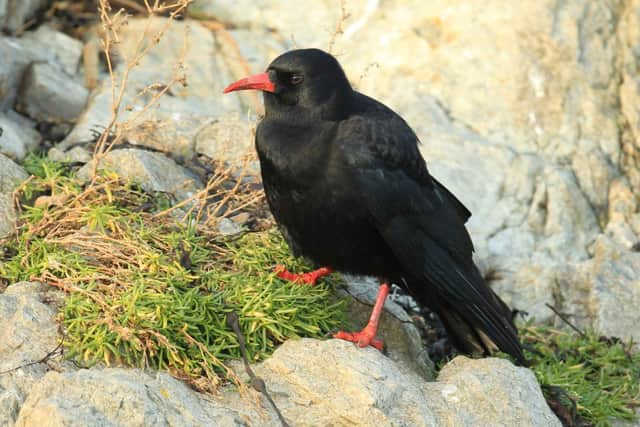

Nests are the subject of an exhibition at my gallery in Thixendale this Easter.
Advertisement
Hide AdAdvertisement
Hide AdThere will be information on how different birds built their nests as well as nesting material on display for visitors to touch and nest boxes to feel inside, alongside a new range of paintings of unusual nesting sites. The exhibition will also feature live video links to secret cameras in boxes where birds of prey and garden birds will be nesting. I’m hoping too that a tawny owl I have under surveillance may have laid its first clutch of eggs in time for Easter.
Easter Nests is at The Robert Fuller Gallery, Fotherdale Farm, Thixendale, 9.30am-4.30pm weekdays and 10.30am-4.30pm weekends from March 28 to April 26. www.robertefuller.com